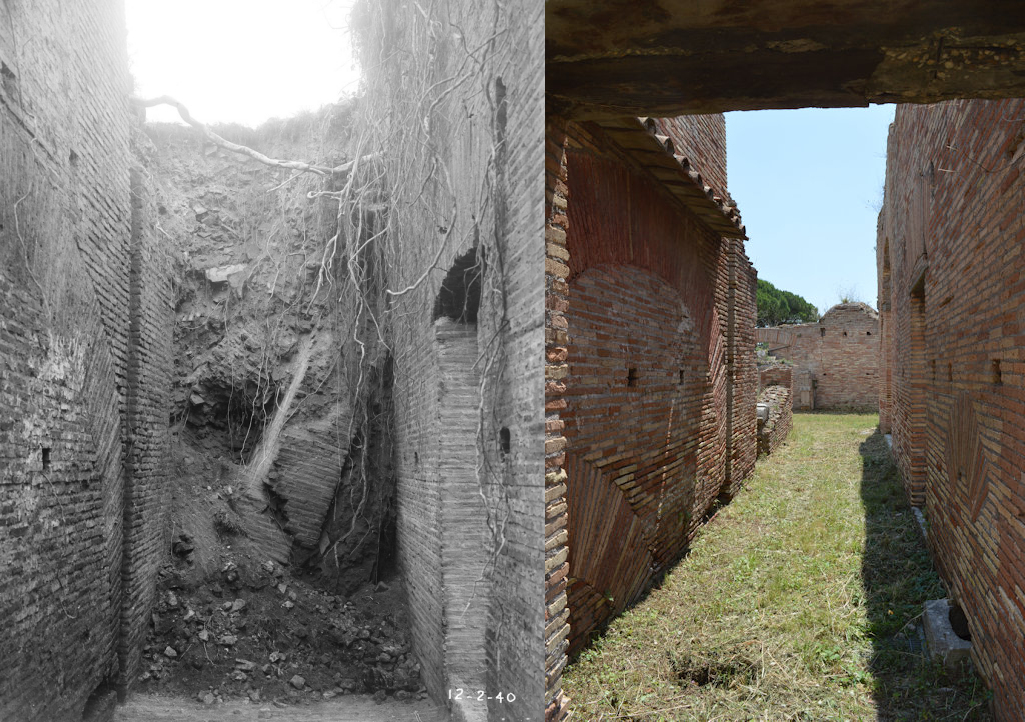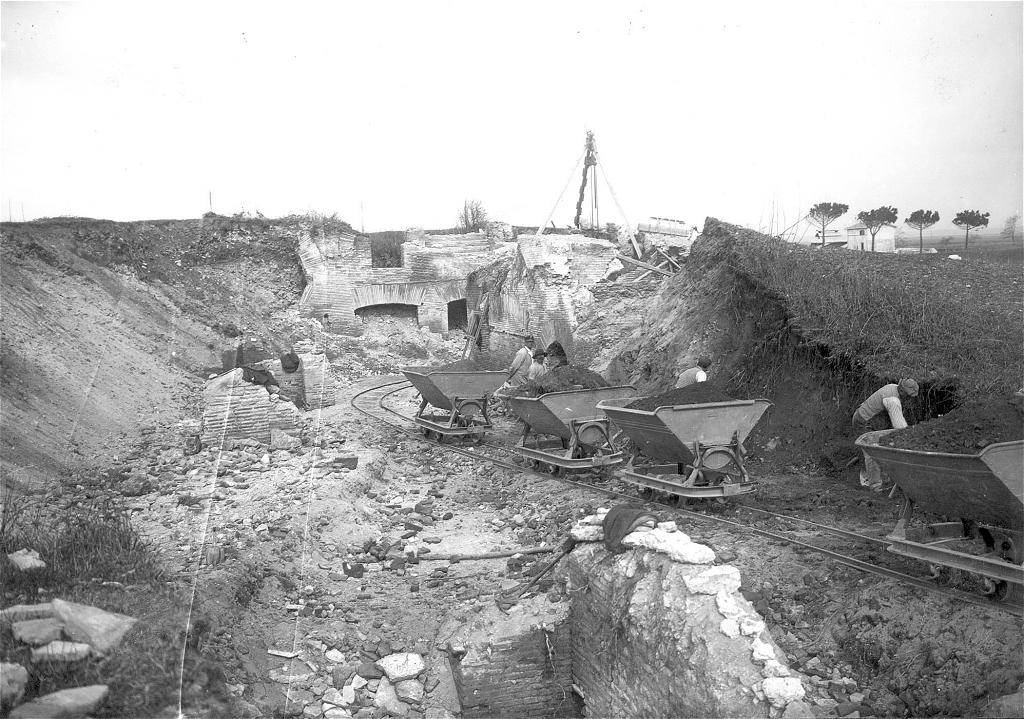SLOW DECAY AND SLOW EMERGENCE
In order to understand the history of the searching and excavations of ancient Ostia, we must first have a brief look at the final phases of the ancient city. What did the city look like at the end of antiquity? Ostia was not frozen in time, like Pompeii and Herculaneum. It was abandoned and collapsed slowly. The determining factors for the abandoning were political instability, the decline of the economy, the diminishing role of Rome, and eventually the collapse of the Roman empire. The decay started in the second quarter of the third century. Until the early third century all buildings in Ostia were used intensively. Then the port began to feel the effects of the political and economic problems. Fewer goods were imported and fewer people lived in the city. With fewer mouths to feed in the harbours, bakeries and other commercial premises were deserted, or not used to their full capacity. It was a slow process. A building could still be used partially, to be deserted completely only later. And a deserted building that was not maintained anymore could still be used as a hull, a shelter, by the few remaining members of a society that did not have the means and the will to contribute to the city infrastructure and architecture.

Ongoing excavations in the House of Hercules in 1940 (left) and the current situation (right).
Photo left: Archivio Fotografico Ostia, neg. B 2912.
The situation changed dramatically in the fifth century. In 410 AD Alaric with Goths, Huns and Alans sacked Rome. In 409 AD he ignored Ostia, but captured Portus, the harbour district to the north of Ostia. In 455 AD Gaeseric and the Vandals sacked Portus. An inscription informs us that they burned the church of Saint Hippolytus on the Isola Sacra, the island between Ostia and Portus. Perhaps they also plundered Ostia. In 537 Vitigis and the Goths laid siege to Portus. The military commander Belisarius then defended Portus and Ostia. Around 600 AD the number of people living in Ostia and in Portus was negligable. No substantial architecture, no wall paintings, no statues, no inscriptions testify to these late inhabitants. Eventually the wooden beams supporting the ceilings rotted away, leading to the collapse of the buildings. Everything of value had been taken by the last inhabitants.
The emergence of Ostia started in the Renaissance, sparked by interest in Roman literature and visual arts, led by humanists. For centuries the emphasis would be on the search for works of art and inscriptions, with little attention paid to the buildings. It was not until the second half of the 19th century that the scope of studies became broader, and therefore the excavations more thorough. The long final phase or process of decay was then reversed by the excavators, who cleared the debris and through restoration tried to reconstruct the situation at the beginning of the decay. What we see today, therefore, is mostly the Ostia of the second century. On closer inspection the remains of many activities in late antiquity can still be seen: thresholds that are at a surprisingly high level, blocked doors and windows, scars of walls that were removed, new walls of a much different type of masonry, and reused marble (often even funerary inscriptions and parts of sarcophagi). Only since a few decades has the research been all-inclusive: from animal bones and human skeletons to stables and sarcophagi; from modest dwellings to palaces; from shops to vast harbour basins and canals.

The excavations of the Square of the Lares in 1916. Photo: Archivio Fotografico Ostia, neg. B 2162.